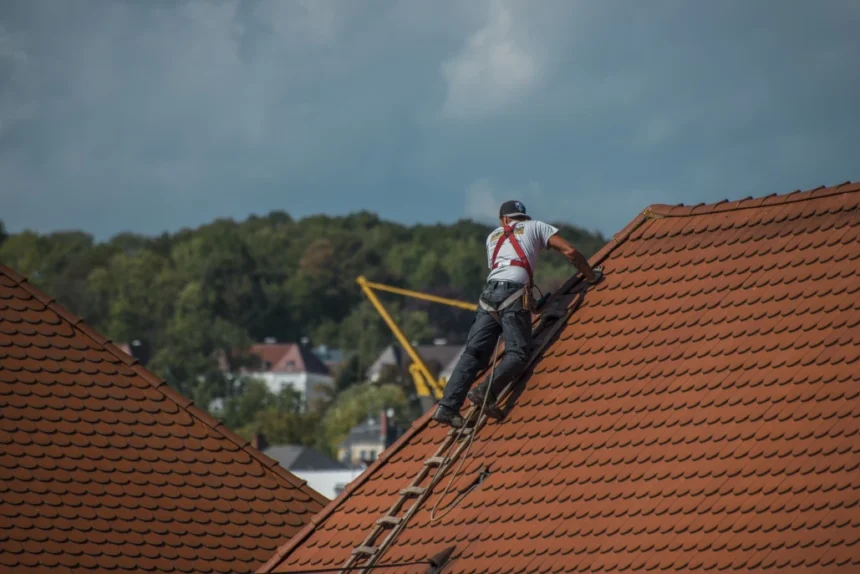When you live in Los Angeles, your roof isn’t just another part of your house—it’s your first line of defense against intense sun, wind, seasonal rains, and occasional seismic activity. While L.A. may not experience harsh snow or hurricanes, that doesn’t mean your roof has it easy. From sun-scorched tiles to clogged drains and cracked shingles, the environment here can take a toll on even the most durable roofing systems.
In a city where curb appeal matters and home values remain high, regular roof maintenance can help you protect your investment and avoid costly repairs down the line. Let’s break down everything you need to know to keep your roof in great shape throughout the year in Los Angeles.
Why Roof Maintenance Matters in Los Angeles
Southern California weather might seem mild compared to other regions, but its unique climate presents very specific challenges. Constant exposure to UV rays can weaken roofing materials, while Santa Ana winds and rare but heavy winter rains can lead to unexpected leaks or damage.
Many homeowners mistakenly assume that if a roof “looks fine,” it doesn’t need attention. But just like a car, your roofing system needs periodic checks to prevent major issues. A small crack or warped section could quickly escalate into a full-blown water intrusion problem during an unexpected storm.
In Los Angeles, where homes can range from historic Spanish-style villas to modern flat-roof marvels, roofing systems vary widely. Whether you have clay tiles, asphalt shingles, or a flat cool roof, the key to longevity is staying proactive with your maintenance routine.
Common Roof Issues in Los Angeles Homes
There are a handful of issues that come up often in homes across L.A., especially those that have been standing for a few decades or more. Here are the problems homeowners most frequently encounter:
- Sun Damage: UV rays cause roofing materials to dry out, fade, and crack over time. This is especially common with asphalt shingles and tar-based flat roofing.
- Water Pooling on Flat Roofs: Many Los Angeles homes have flat or low-slope roofs, which can trap standing water after a rainstorm if the drainage isn’t maintained.
- Clogged Gutters and Drains: Palm fronds, leaves, and other debris can block drainage systems, leading to overflow and leaks.
- Flashing Failure: The metal pieces that seal roof joints and edges often deteriorate, letting in water around vents, chimneys, and skylights.
- Moss or Algae Growth: In shaded areas or after a rainy winter, growth can occur and slowly degrade roofing surfaces.
- Earthquake Damage: L.A.’s seismic activity, while often minor, can loosen tiles or damage roofing structures, especially in older homes.
Ignoring these issues can shorten the lifespan of your roof and lead to larger structural problems within the home.
What Does a Roof Maintenance Routine Include?
Whether you’re in a bungalow in Echo Park or a hillside home in Hollywood Hills, the following maintenance checklist applies to most Los Angeles properties:
- Biannual Roof Inspections
Ideally performed in the spring and fall, regular inspections help identify small problems before they become major ones. A roof inspection los angeles service can spot everything from missing tiles to worn underlayment and provide actionable advice. - Cleaning Debris and Drains
Even if it rarely rains, your roof still collects dust, branches, and other debris. Regularly clearing gutters and downspouts ensures proper drainage and prevents water intrusion. - Checking for Surface Damage
This includes cracked or missing shingles, popped nails, blistering, and signs of wear or sagging. - Examining Roof Flashing and Seals
Ensuring that metal flashing around vents and joints is still watertight is key to preventing leaks. - Looking at the Attic or Ceiling
Check from the inside out. If you see mold, water stains, or damp insulation in the attic, it may signal an issue with your roof. - Trimming Overhanging Branches
Especially in areas like Silver Lake or Topanga where trees are common, trimming branches away from the roof can reduce debris and prevent punctures.
Seasonal Tips for Roof Care in Los Angeles
Each season brings its own set of considerations:
- Spring: This is prime time for inspections. Winter rains may have revealed or caused damage. Clean out gutters and examine flashing.
- Summer: Intense sun exposure accelerates aging. Look for signs of UV wear and keep an eye on ventilation systems to avoid heat buildup.
- Fall: Leaves and palm debris are your main concern. Clear out the gutters and check for damage before the rainy season.
- Winter: While rain is infrequent, storms can be intense. Make sure everything is sealed and watertight before the season arrives.
Even though Los Angeles has fewer weather extremes, the cycle of dry spells followed by sudden downpours can be especially rough on neglected roofs.
DIY Roof Maintenance vs. Hiring a Pro
While you can handle basic maintenance like clearing debris or visually checking your shingles, there’s a limit to what’s safe and effective without proper training. Navigating steep slopes or fragile roofing materials without experience can lead to accidents or additional damage.
That’s why working with a professional roofing company is your best bet. A licensed contractor knows how to evaluate everything from surface materials to underlying structures and provide a detailed condition report. If you’re unsure who to trust, companies like sho global roofing specialize in local roof care tailored to L.A.’s climate and architectural styles.
Hiring a pro also means getting ahead of any code or permit issues, especially if repairs or replacement are needed in the future.
How Long Should a Roof Last in Los Angeles?
Roof longevity depends on material, installation quality, and how well it’s been maintained. Here’s a general breakdown:
- Asphalt Shingles: 15–30 years
- Clay or Concrete Tiles: 40–75 years
- Metal Roofs: 40–70 years
- Flat Roofs (TPO, PVC, Torch Down): 15–30 years
- Wood Shingles/Shakes: 20–40 years (less common in L.A. due to fire restrictions)
If your roof is nearing the end of its expected life span, it may be time to consider a full replacement. Regular maintenance and inspections can help extend these timelines and provide peace of mind in the meantime.
When to Schedule a Roof Inspection
If you’re not sure when your last inspection was, now is a good time. Some key indicators that you shouldn’t wait include:
- Water stains on your ceiling
- Mold growth near the attic or vents
- Curling or missing shingles
- A sagging roofline
- Sudden increases in your energy bill (could mean poor insulation or ventilation)
Scheduling a roof inspection los angeles service before the rainy season can save you from the headache of leaks and costly emergency repairs.
Final Thoughts: Keep Your Roof in Top Shape Year After Year
Your roof plays a major role in the value, safety, and efficiency of your home. By staying proactive and investing in regular maintenance, you’re doing more than preventing problems—you’re protecting your home’s future.
Living in Los Angeles means you enjoy sunshine nearly year-round, but it also means your roof works overtime to keep your home protected. With seasonal care, the help of professionals like sho global roofing, and an eye for early signs of trouble, you can avoid expensive repairs and extend the life of your roof for decades to come.
Whether you’re planning to stay in your home long-term or thinking about selling in the near future, a healthy roof is something every homeowner should prioritize. If you’re unsure where to begin, start with a simple inspection. From there, create a seasonal checklist or partner with a roofing company that understands your home and the climate it lives in.


